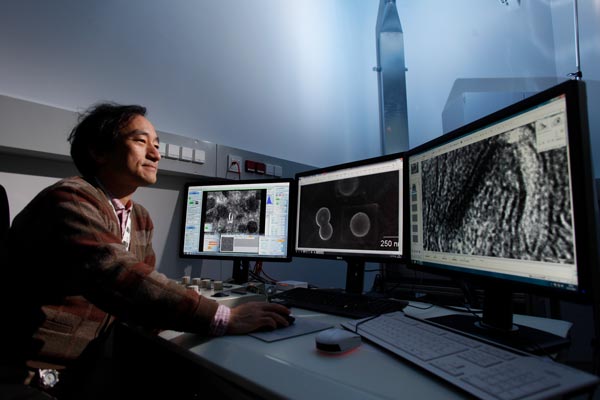December 23, 2013
Lasting impressions
IST Austria Professor Ryuichi Shigemoto studies the relation between learning technique and memory capability

In two publications appearing online Monday, Dec 23, 9pm (CET), in the Proceedings of the National Academy of Sciences (PNAS) this week Ryuichi Shigemoto, Professor at IST Austria, and his team present new insights into the synaptic changes underlying motor learning.
Memories are formed in neuronal circuits through subcellular events, such as changes in the transmission of information between neurons at synapses, and the size and number of these connections. A particular type of synapse in the cerebellum, parallel fiber-Purkinje cell (PF-PC) synapses is the subject of the team’s first PNAS paper, in which they investigate how memory lasting over several days is implemented in the brain. As a model for motor learning, the researchers used compensatory eye movements in rodents, which allow them to stabilize an image when the surroundings move. They show that in short-term learning, AMPA-type glutamate receptors are removed from synapses, while in long-term learning, this is followed by changes in the number of the synapse and Purkinje cell spines. Herein, receptor removal is followed by the elimination of the synaptic connection. Ryuichi Shigemoto and his team thus show that distinct structural changes underlie short- and long-term memory in motor-learning.
A peculiarity in memory formation, which the authors investigate in their second PNAS paper, is that the way in which information is presented also affects if and how memories are formed and how long they last. For example, when learning is broken up by rest periods (spaced training), stronger and longer memories are formed than if learning is not broken up (massed training). How subcellular modifications are related to memory and, in particular, how spaced and massed training affect these changes differently is unknown. The researchers show that the number of the PF-PC synapse is reduced in both spaced and massed training, but that the time-scale differs and correlates with the kinetics of memory. In spaced training, long-term memory builds up more quickly and lasts longer and correspondingly, the synapse structure changes more quickly and the modification lasts longer. In massed training, instant memory is formed quickly but also fades quickly, and then long-term memory builds up slowly but lasts shorter. In this type of training, the synapse also changes more slowly and the modifications only last for a shorter time period. The researchers conclude that the regulation of synapse numbers and its kinetics underlies the different memory formation in spaced and massed learning.



